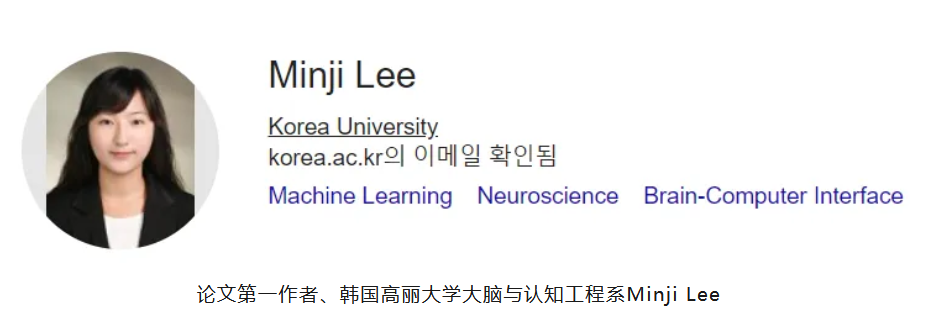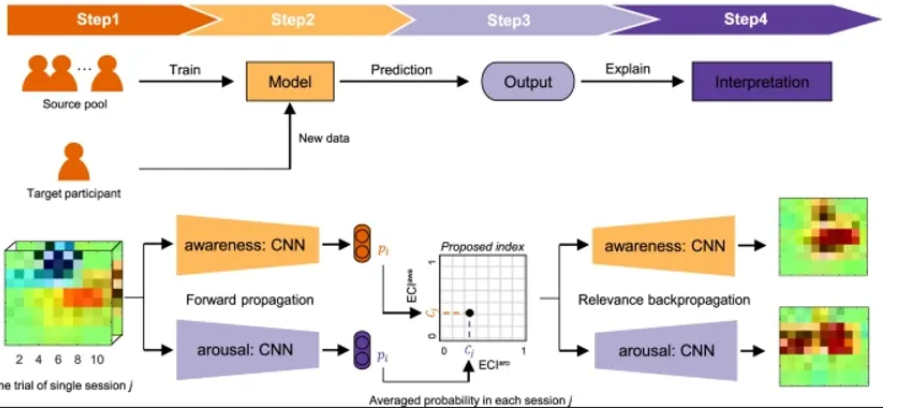Nature: Scientists for the First Time Use Deep Learning to Quantify Human Consciousness
A recent brain science research collaboration between South Korea, Belgium, and others has made a significant discovery: consciousness can be quantified using deep learning. The study has gathered experimental data on different states such as sleep, anesthesia, and brain injury.
Now, scientists have a new understanding of human consciousness!
This study through the AI method of deep learning algorithms.
Amazingly! Consciousness in different conditions such as sleep, general anesthesia, and severe brain injury has been effectively measured.
Quantifying Human Consciousness
Recently, a project funded by the EU on HBP SGA3 and DoCMA has made significant progress and can now quantify human consciousness.
The paper, titled "Quantifying Arousal and Consciousness Across Different States Using Interpretable Deep Learning," was published in Nature Communications on February 25th of this year.
The project was led by Minji Lee from Korea University in South Korea, with collaborative research from the University of Liège in Belgium, among others.

The first author of the paper, Minji Lee from the Department of Brain and Cognitive Engineering at Korea University
In this study, the research team successfully created an explainable consciousness indicator (ECI), which helps scientists explore different components of consciousness.
Consciousness is described in two parts: one part is called Arousal, which is the 'state of being awake,' and the other part is called Awareness, referring to a person's 'cognitive abilities.'
That is to say, a normal person opening their eyes means this person is in a state of 'awakeness.' If they have the ability to receive different instructions and act according to the instructions, it indicates they have 'cognitive abilities.'
However, under different conditions, including dreamless sleep, dream sleep, anesthesia, and severe brain injury, people have different levels of consciousness capabilities.
This study used three types of experimental data: sleep, general anesthesia, and severe brain injury, obtaining 6, 16, and 34 observational samples, respectively.
So far, this is the first study to quantify consciousness, and the experiment has obtained relatively reliable data.
However, Olivia Gosseries, a co-author of the paper and head of the Coma Science Group at the University of Liège, said, "To apply this new tool in clinical practice and develop an online real-time tool, more research is needed."
Olivia believes that before the ECI consciousness indicator can be used in operating rooms or ICUs, there is still a way to go in our research.
ECI Consciousness Indicator

How was the research conducted with the help of ECI? This is a schematic diagram of the ECI consciousness indicator framework:
Its working principle can be explained step by step as follows:
The first step is to convert the original electroencephalogram (EEG) signals into a 3D spatiotemporal matrix.
The second step is that the converted 3D features are used for two consciousness components of the convolutional neural network: 'Arousal' and 'Cognitive Ability.' Under each state of consciousness, EEG data are trained into two categories: low and high.
The third step is to take the average of the inter-class probabilities for each state of consciousness to calculate the ECI in each session.
The last step is to use layered relevance propagation (LRP) to check which brain signals the model has learned and why it made such a decision.
The study pointed out that the ECI consciousness indicator, with the help of deep learning, can distinguish between 'Arousal' and 'Cognitive Ability.'
A plus sign indicates a high level, and a minus sign indicates a low level.
Researchers have said that this new research tool is a reliable 'discriminator,' an objective tool for measuring consciousness.
At the same time, ECI also has the potential to improve the level of clinical care for patients in different environments, such as monitoring anesthesia induction states during surgery and diagnosing coma or vegetative states.
The study shows that most states have consistent levels of 'Arousal' and 'Cognitive Ability,' as shown in the 'Arousal' and 'Cognitive Ability' columns with the same '+“and”-'.
However, the rapid eye movement (REM) sleep state and the anesthetic state induced by ketamine have a lower 'Arousal' and higher 'Cognitive Ability,' which are significantly different from the other states.
The second author of the paper, Professor Seong-Whan Lee from the AI Department of Korea University, said that the paper demonstrates the world's first ECI consciousness measurement, a new technology that can quantify both 'Arousal' and 'Cognitive Level' at the same time.
The study provides an interpretation of consciousness in 8 states for physiological, pharmacological, and pathological conditions:
In the physiological state, the first category, the normal waking state, is high 'Arousal,' high 'Cognitive Ability'; the second category, the dream-dreaming rapid eye movement (REM) sleep state, is low 'Arousal,' high 'Cognitive Ability'; the third category, the non-dreaming non-rapid eye movement (NREM) sleep state, is low 'Arousal,' low 'Cognitive Ability'.
In the pharmacological state, the fourth category, ketamine anesthesia, is low 'Arousal,' high 'Cognitive Ability'; the fifth category, propofol or xenon-induced anesthesia, is low 'Arousal,' low 'Cognitive Ability'.
In the pathological state, the sixth category, minimally conscious state (MCS), is high 'Arousal,' high 'Cognitive Ability'; the seventh category, non-behavioral minimally conscious state (MCS*), is high 'Arousal,' high 'Cognitive Ability'; the eighth category, unresponsive wakefulness syndrome (UWS), is high 'Arousal,' low 'Cognitive Ability'.
In addition, the parietal lobe area of the brain is most relevant to measuring a person's 'Arousal' and 'Cognitive Ability'.
It is reported that this HBP SGA3 (full name: Human Brain Project Specific Grant Agreement 3) is the last stage of the human brain research project.
The results of this cooperation are fruitful, demonstrating that the EBRAINS shared data platform tool is very effective in studying large-scale human neuroimaging datasets.
In the future, experts in quantifying consciousness will continue to develop digital neuroscience and brain science with some of the achievements of the HBP group.
Reference links are provided in the original article.
Source: New Intelligent Element

